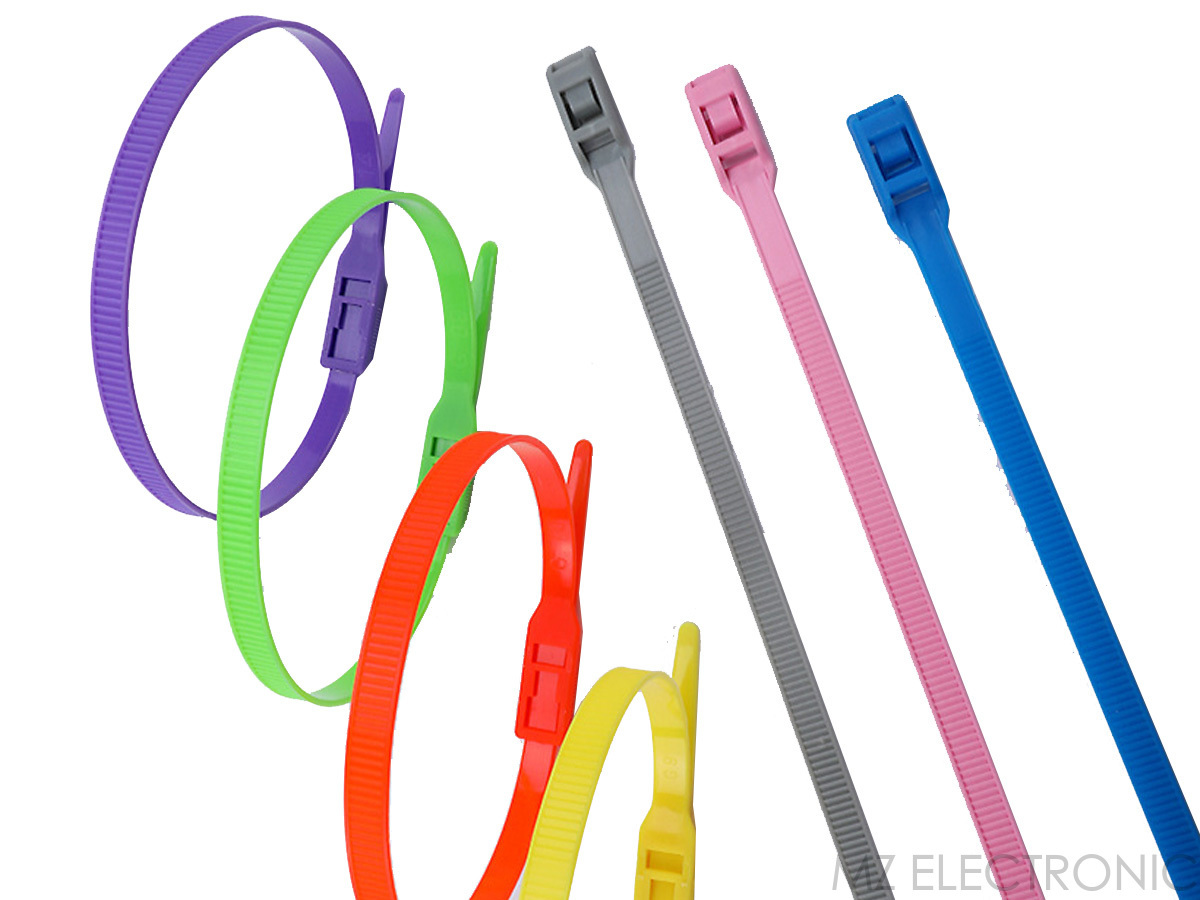17
2025
-
07
Quick binding steps for plastic cable ties
Author:
Step-by-Step Guide to Quickly Securing Items with Plastic Cable Ties
Plastic cable ties are essential for organizing cables, securing bundles, or fastening objects efficiently. Mastering quick绑扎 (binding) techniques ensures projects are completed faster while maintaining strength and reliability. Below are clear, actionable steps for rapid and effective use.
Preparing Materials and Workspace
Before starting, organizing tools and assessing the task reduces delays and errors:
- Select the Right Size: Choose a tie length that comfortably wraps around the bundle with 2–3 cm of excess for tightening. For example, a 20 cm tie works well for securing a 15 cm diameter bundle of cables.
- Clear the Area: Remove debris or sharp objects that could damage the tie or the items being secured. In cluttered spaces, like workshops or server rooms, lay out cables neatly to avoid tangling during绑扎.
- Gather Tools: While most ties can be tightened manually, having diagonal cutters or scissors nearby simplifies trimming excess material after installation.
For repetitive tasks, such as bundling wires in electrical panels, prepare multiple ties in advance to streamline the process.
Efficient Threading and Initial Positioning
Proper threading ensures the tie engages smoothly with the ratchet mechanism:
- Hold the Bundle Firmly: Use one hand to grip the items being secured, preventing movement during绑扎. For irregularly shaped objects, like hoses or tools, align them to minimize gaps.
- Insert the Tail Correctly: Thread the pointed end of the tie through the ratchet head from the side with the locking teeth. Ensure the tail exits the head smoothly without twisting, as misalignment can cause jamming.
- Position for Accessibility: Place the tie parallel to the bundle’s length, leaving the ratchet head on the outer side for easy tightening. In tight spaces, such as behind appliances, angle the tie slightly to reach the head with your dominant hand.
Practice threading with scrap ties to develop muscle memory, reducing setup time for real tasks.
Rapid Tightening Techniques
Achieving a secure fit quickly requires controlling tension without over-tightening:
- Pull Evenly: Grasp the tail near the ratchet head and pull steadily in a straight line. Avoid jerky motions, which can weaken the tie or shift the bundle. For example, when securing a stack of books, pull until the cover feels snug but not compressed.
- Use Two Hands for Larger Bundles: For thick or heavy bundles, stabilize the ratchet head with one hand while pulling the tail with the other. This distributes force evenly, preventing the tie from slipping or breaking.
- Check Tension Mid-Process: Pause after pulling halfway to ensure the bundle remains aligned. Adjust items if they shift, then continue tightening. This prevents rework caused by uneven绑扎.
In high-volume scenarios, such as event setups, assign one person to thread ties and another to tighten them, dividing tasks for speed.
Trimming and Final Adjustments
Finishing touches ensure a professional appearance and prevent hazards:
- Cut Excess Material Cleanly: Position diagonal cutters at a 45-degree angle to the tail and snip it flush with the ratchet head. A clean cut reduces sharp edges that could scratch surfaces or injure hands.
- Inspect for Looseness: Gently tug the bundle to confirm the tie holds firmly. If it slips, loosen the tie slightly, reposition the bundle, and retighten. Loose ties risk coming undone under vibration or movement.
- Label or Color-Code (Optional): For organized systems, such as data centers or workshops, use colored ties or labels to identify bundles by function. For instance, red ties could mark power cables, while blue ties indicate network wires.
In dynamic environments, like automotive interiors, leave a small loop in the tail before trimming to accommodate future adjustments without cutting a new tie.
Handling Special Cases for Speed
Certain scenarios demand adapted techniques to maintain efficiency:
- Bundling Curved Objects: When securing rounded items, like pipes or tubes, wrap the tie in a spiral pattern to conform to the shape. Start at one end and overlap each loop slightly to ensure full coverage.
- Tight Spaces: In confined areas, such as inside machinery or wall cavities, use a tool with an extended handle to reach the ratchet head. Alternatively, pre-thread the tie outside the space and slide it into position before tightening.
- Reusable Ties: For temporary绑扎, select ties with sliding locks instead of ratchet heads. These allow quick adjustments without cutting, saving time during iterative tasks like prototyping or event decorations.
By integrating these steps into workflows, users can achieve fast, durable绑扎 results across diverse applications, from household repairs to industrial installations.
plastic cable ties
Previous Page
Hot News
2025-07-18
Circular binding method with plastic cable ties
Plastic cable ties are versatile tools for creating secure loops around cylindrical or irregularly shaped items. Mastering circular binding ensures stability in applications ranging from organizing cables to securing hoses or tools.
2025-07-18
Hidden binding techniques for plastic cable ties
Plastic cable ties are widely used for securing items, but visible ties can disrupt aesthetics in design-focused projects or cluttered spaces. Mastering hidden绑扎 (binding) methods ensures functionality without compromising visual appeal.
2025-07-17
Quick binding steps for plastic cable ties
Plastic cable ties are essential for organizing cables, securing bundles, or fastening objects efficiently. Mastering quick绑扎 (binding) techniques ensures projects are completed faster while maintaining strength and reliability. Below are clear, actionable steps for rapid and effective use.
2025-07-17
Precautions for using plastic cable ties at high temperatures
Plastic cable ties are widely used for securing and organizing items, but their performance can degrade under extreme heat. To ensure safety and functionality, users must account for material properties, environmental factors, and application-specific demands when operating in high-temperature settings.

